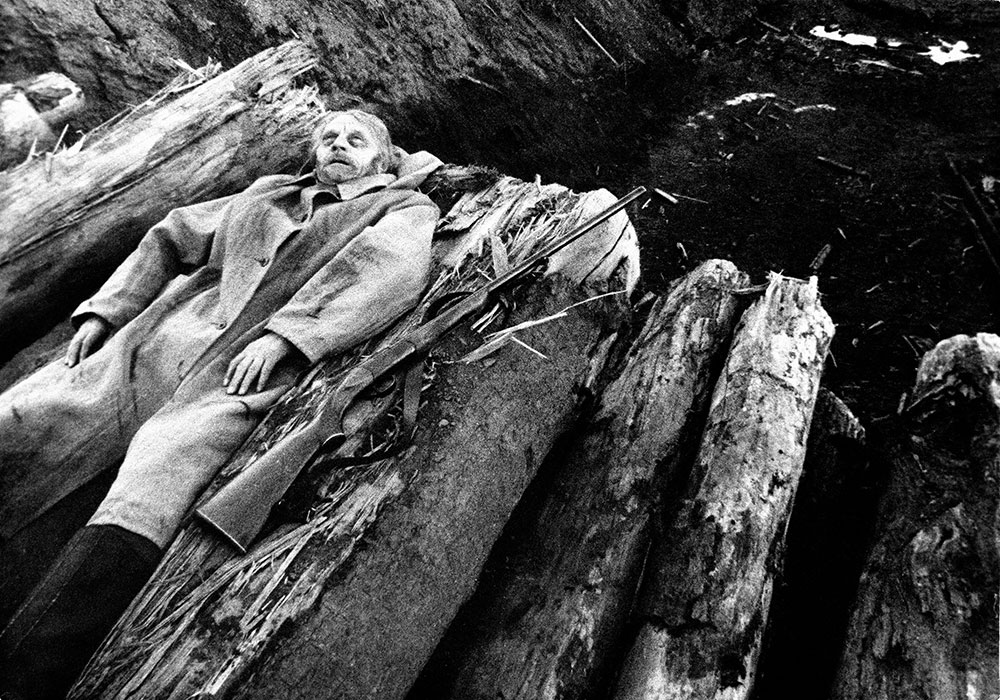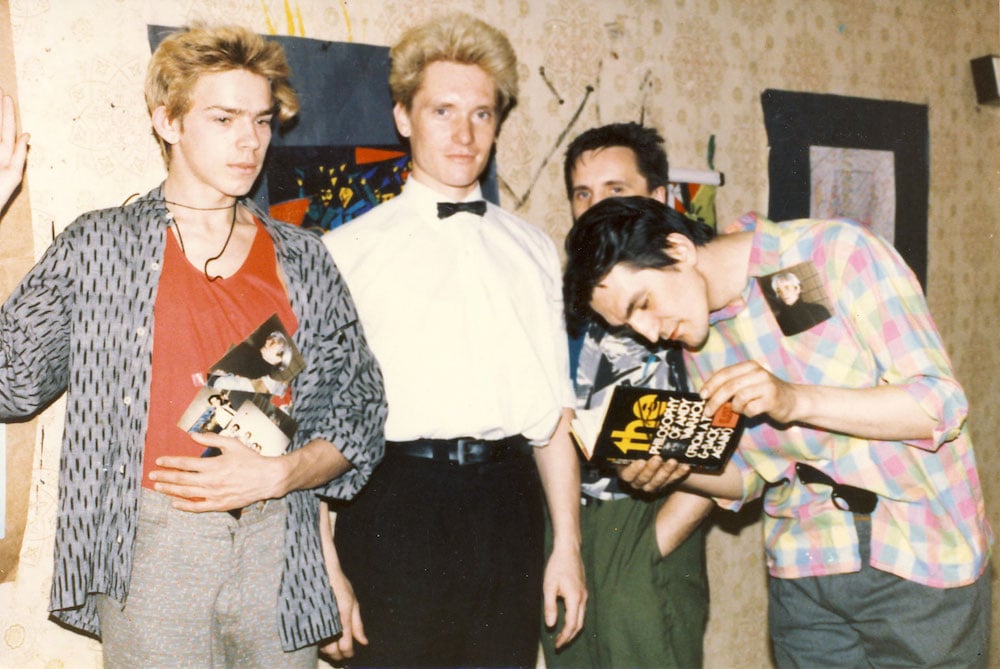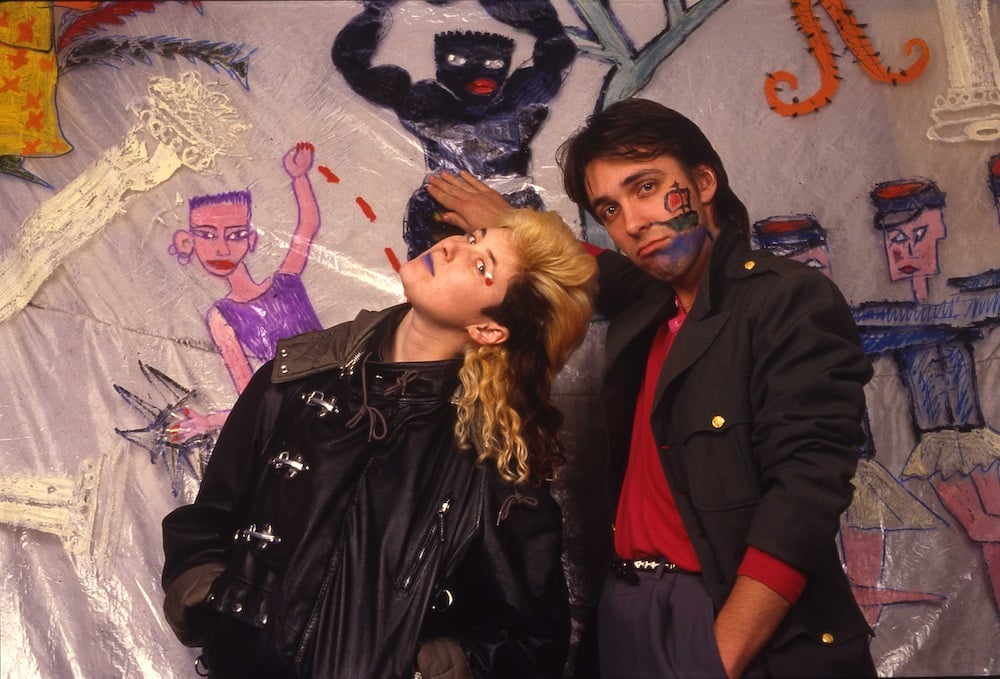Exquisite corpse: remembering the underground filmmaker who brought zombies to the USSR

In late 1980s Leningrad, as the Soviet Union entered its death throes, Yevgeny Yufit and his friends starting making anarchic, no-budget horror films — invariably featuring undead corpses — in their spare time. Carmen Gray looks back at Yufit, who died recently, and Necrorealism, the cult sub-genre he created
Filmmaking in Russia in the 1980s was under the total control of the Soviet regime — at least, officially. State studio Goskino had a monopoly over what was made, and what ideas and imagery were deemed acceptable by the censors. The freedom to experiment that had fired up the ‘20s avant-garde had long been replaced by the Party-sponsored idealism of Socialist Realism, depicting heroic, strapping harvesters and fertile women glowing with health striving toward the shining heights of progress guaranteed for the future. But some artists, pushed underground and feeling far from spiritually nourished by these utopian myths, still found ways to work. Their revulsion at what they felt to be hypocrisy fermented into a punk manifestation of all that had been denied by and marginalised from propaganda’s dream.
Yevgeny Yufit was one such counter-force. He was a key driver of Russia’s unauthorised Parallel Cinema, and the loose movement that came to be known as Necrorealism. The artist from St Petersburg (then called Leningrad) has for the last few years been out of the public eye. But his strong cult following around the globe remains among fans of extreme imagination and black wit, many of whom discovered his bizarre shorts for the first time in the recesses of the internet, and cherish the shock and delight they provoke. Yufit died just before Christmas at the age of 55 in a loss not widely reported in the media, but deeply felt by those who care about radical cinema. We look back on the energy and abandon of his rule-shattering films.
Yevgeny Yufit first worked with painting and photography before he started dabbling in cinema in the early ‘80s. Since the state controlled the means of production, this meant making films with friends on zero budget and improvising with the most basic of equipment. His first 16mm shorts were in scratchy black-and-white, and without recorded sound. This aesthetic was reminiscent of the ‘20s era of avant-gardists that had partly inspired him, and was a middle finger to technical progress, gleefully embracing the primitive and haphazard. These films were more the offshoots of the drinking sessions and rough, spontaneous pranksterism of his disaffected, directionless pals on weekend trips to the forest than of pre-planned design. He set up Russia’s first independent film studio in 1985, Mzhalala Film, and the police confiscated one of their first film reels. The story goes that, having watched a sequence of the director’s friends wrestling in a garbage heap, the cops returned it with the verdict that it was “too idiotic” to be considered law-breaking.
The police confiscated one of their first film reels and returned it with the verdict that it was “too idiotic” to be considered law-breaking
Yufit would have been the first to admit that his work was idiotic — but that anarchic renunciation of order and rational motivation had a liberating, subversive potency. “It was merriment for the sake of filming and filming for the sake of merriment,” Yufit once recalled. In his first short, the three-minute Werewolf Orderlies from 1984, a hacksaw-carrying young sailor gets off a train and walks into woods knee-deep in snow. He jumps from a tree and is caught in a blanket by a pack of figures in medical uniforms, who seem to save him only to then energetically bash him to a pulp with spades. A shot of him lying out cold cuts to a white ship at sea — a proud Soviet symbol of optimism.
A year later came his short Woodcutter — a demented choreography of episodic violence and death, that kicks off with a man falling nine storeys from an apartment balcony into a debris-filled courtyard, but continuing (as an inter-title tells us) “to function well”. A motley band of brawling, zombie-like figures reel about the forest, hanging this high-functioning corpse from a tree and laying him in the path of an oncoming train, to the screeching strains of the crudely recorded song “Fat Wax”, a Necrorealist anthem of sorts penned by artist Oleg Kotelnikov (“On our corpses there keep munching hoards of fattened beetle bugs / Yes, boys, it’s only after death you get life like it’s s’posed to be!”) It ends with an archival shot of pioneer children setting white doves into flight.
They were invested in nihilism, anarchy and extreme de-idealisation as modes of creative release from an oppressive system
In all this gleeful mayhem, some tendencies jump out at us: black humour and grotesque slapstick, and absurdist surrealism in the form of the senseless repetition of random, savage attacks and suicidal acts. All that was taboo for the socialist mindset — most of all, death and decay not linked to sacrifice for a greater Motherland — bursts forth. So it’s no surprise that Necrorealism was the name given to this loose movement, a band of artists that included among others Andrei Mertvyi, who made the short Urine-Crazed Body Snatchers; Yevgeny Debil; and punk musician Leonid Trupyr, whose painting of drowned sailors with cut throats walking in reeds is probably Necrorealism’s most recognisable image, and who often accompanied screenings of Yufit’s films with electric guitar. They were too intuitively invested in nihilism, anarchy and extreme de-idealisation as modes of creative release from an oppressive system to set themselves a defined manifesto of rules. Totalitarianism is death to the human — but in Necrorealism the human, who dies over and over, remains uncontainable. A forensics textbook by Edward von Hoffman that Yufit discovered, which contained pictures of the corpses of suicides and other violent deaths (one of its many illustrations is captioned: “Crushing of the skull with a pistol shot from thirty paces away”), was referred to as visual inspiration, as they smeared themselves with tomato paste and wrapped themselves in bandages to simulate fatal wounds.
The public initially had little chance to see the work of the Necrorealists, who mainly just shared their creations with each other. But change was afoot. This was the generation that saw communism in its protracted death throes, and the ideology’s supposed “immortal” nature crumble, as repeated state funerals on television drew the caskets of Politburo elders before the citizenry’s eyes (in 1985 Chernenko was the third Soviet leader to die in three years). With perestroika and the opening up of culture, followed by the collapse of the Soviet Union in 1991, the work of Yufit and his fellow radical spirits emerged into international regard.
Totalitarianism is death to the human — but in Necrorealism the human, who dies over and over, remains uncontainable
A number of shows have acknowledged his significance, from a programme dedicated to Yufit at the Rotterdam International Film Festival in 2005 (including the World Premiere of his final feature Bipedalism) to a retrospective of Necrorealism at Moscow’s Museum of Modern Art in 2011. Yufit had turned toward more polished, full-length filmmaking from 1989 on, as a result of studying under Russian directing maestro Alexander Sokurov, who had established an experimental workshop at studio Lenfilm and invited him to join. But Yufit’s themes remained the same. His 1991 debut feature Daddy, Father Frost is Dead sees a scientist in a family of vampires, who is intent on writing a treatise on a new kind of mouse, subjected to many bizarre and ghoulish events. Silver Heads from 1998 (co-directed with Vladimir Maslov) turns on the attempt to make a hybrid between humans and trees. If the former regime’s efforts to make a New Soviet Man had in fact resulted in negative selection, Yufit was there to grant a life in death to the supposed waste products of research; defiant creation amid a sense of desolation.


